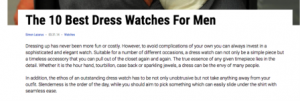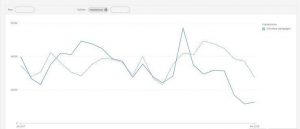Contributor Ryan Phelan explains the benefits of progressive profiling and walks you through the steps you should take when implementing your profiling program.
 “First-person marketing,” as my colleague, Matt McGowan, explained in an earlier Marketing Land piece, sees customers as individuals to whom brands must shape their messaging to ensure they’re meeting the person’s needs, interests and goals. Central to first-person marketing is this credo: “Know thy customer.”
“First-person marketing,” as my colleague, Matt McGowan, explained in an earlier Marketing Land piece, sees customers as individuals to whom brands must shape their messaging to ensure they’re meeting the person’s needs, interests and goals. Central to first-person marketing is this credo: “Know thy customer.”
If you don’t know much about your customers, progressive profiling is an excellent way to gather it directly from the source — your customers themselves — without driving them away with endless questions about their interests, likes and dislikes.
Why progressive profiling is a win for everyone
Progressive profiling is rolling out a series of questions at strategically timed intervals across the relationship. This way, you can build up a reservoir of data about your customers over time. And you don’t scare away newcomers by asking for too much information up front.
What’s in it for you? The answers your customers give you make you — and your marketing — smarter, and your customers’ experience with you more valuable. That’s why it’s a win for everybody.
To be successful with progressive profiling, think about the relationship you have with your customers, the questions you want to ask them and the value you offer them in exchange for answering your questions.
This value exchange is at the core of your relationship with your customers. They will give you the information you need to drive more relevant conversations if they perceive the value of what you’re offering.
If you ask for a birth date, for example, but you don’t send your customer a birthday email, you negate the value exchange. They get no value for giving you that data.
When implementing a progressive profiling program, I recommend you go through the following steps:
Step 1: Build your profiling program
Before you start thinking up questions to ask your customers, you must answer these three questions yourself:
- What don’t I know that I need to know? Think about your campaign year. Identify the gaps in your data and what you know about your customers. What’s the value to you for closing that gap?
- How will I use the information I get? Document how you’ll act on the information you get from customers. Create a strategy that lays out how you’ll collect the information, and then where and how you’ll use it.
- How will I put it in place? Define what you need and how you’ll explain the value exchange to customers.
Then, create a visualization, digitally or on paper — whatever helps you see the entire plan most clearly. Set up a chart with the three elements you need:
- The information you need
- How you’ll use that information
- How both you and your customers benefit from that information
Step 2: Automate your profiling program
Figure out the optimal time to send your information requests. Automation means your information-gathering process runs continually in the background. Since you’re always gathering information, you can decide at what point in the customer relationship it makes sense to ask a specific question in order to get a higher rate of response.
Define your KPIs. You’re not just looking at when you send the message, but also how you’ll measure your success. How will you track and report it?
Your KPI (Key Performance Indicator) could be how many people clicked on a birthday email, redeemed a promotion or answered questions, such as the kind of car they drive.
However, your KPI doesn’t have to be oriented toward a conversion. Progressive profiling is a series of micro-conversions, with each person supplying you with the information you need.
To find the best times, you’ll have to do some testing. Look at the type of question and information request. Should it be part of your onboarding program? After a purchase or browse session?
Step 3: Assess the performance of your profiling program
After you test and launch your program, it’s time to measure your responses. Did you meet your KPIs? Did your questions help you accomplish your goals? Did you use the information effectively?
Progressive profiling is a series of micro-conversions. Assess whether your program helped your performance. Did it move the needle or allow you to have better engagement and conversations with your customers?
Takeaways for smarter messaging
The real power of progressive profiling is the information you get from your customers because they want to give it to you in exchange for a benefit they will value. The mere act of asking a question isn’t enough. You must convey to your customers why the information is important, and then do something constructive with the information you get.
Strategic progressive profiling, and the information that comes out of it, makes your messaging smarter, builds better relationships with your customers and yields results.
What’s your first question?
Some opinions expressed in this article may be those of a guest author and not necessarily Marketing Land. Staff authors are listed here.
Marketing Land – Internet Marketing News, Strategies & Tips
(66)







